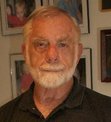Tom Glenn's Blog, page 220
January 23, 2017
Armed South Vietnamese Air Force Officers Demand Evacuation at Gun Point
In the final pages of Last of the Annamese, the protagonist, Chuck Griffin learns that South Vietnamese Air Force officers have forced their way into the DAO building (on the northern edge of Saigon at Tan Son Nhat) and are demanding evacuation at gun point. Chuck and his office mates receive orders to proceed immediately to the evacuation staging area.
The event described really happened. In the early hours of the morning on 29 April 1975, Bob, Gary, and I—the only ones left of the 44 men who had been assigned to my office—received a telephone call telling us that the officers were roaming the halls, guns drawn. We were to leave our office suite and go immediately to the evacuation staging area, another office the Marines had secured. So we sent our last message. It’s a personal message from me to my boss, General Lew Allen, the Director of NSA. It’s now declassified so I can quote it:
HAVE JUST RECEIVED WORD TO EVACUATE. AM NOW DESTROYING REMAINING CLASSIFIED MATERIAL. WILL CEASE TRANSMISSIONS IMMEDIATELY AFTER THIS MESSAGE.
WE’RE TIRED BUT OTHERWISE ALL RIGHT. LOOKS LIKE THE BATTLE FOR SAIGON IS ON FOR REAL.
FROM GLENN: I COMMEND TO YOU MY PEOPLE WHO DESERVE THE BEST NSA CAN GIVE THEM FOR WHAT THEY HAVE BEEN THROUGH BUT ESPECIALLY FOR WHAT THEY HAVE ACHIEVED.
I added “from Glenn” before the final paragraph to assure that General Allen would know these words were from me personally.
We destroyed our crypto and comms equipment and went to the staging area. Bob and Gary flew out on a helicopter at 1400 hours that afternoon. I followed later carrying the two flags that had stood beside my desk, the stars and stripes and gold and orange banner of the now defunct Republic of Vietnam. Those two flags are now in the Cryptologic Museum at Fort Meade.


January 22, 2017
The Prologue in Last of the Annamese
The prologue to Last of the Annamese is set in Da Nang in 1967. Chuck and Ike visit an orphanage, and in the infirmary, they find a small boy with phosphorus still burning in his skin. They rush off to find an American military doctor to treat the boy, but when they return, the boy has died. This episode sets the stage for the drama that follows.
The boy’s death has several ramifications. First, it mirrors the way Chuck’s own son, Ben, died. Second, it establishes the theme of the boy-child in Chuck’s life. The theme recurs throughout the book.
Third, and in some ways most important, it underlines in unspoken terms the U.S. responsibility for the tragedies that the various boy-children in Chuck’s history endure. Ben, it turns out, didn’t die in combat; he was killed by another GI. Thu, the child of Thanh and Tuyet, is orphaned during the final U.S. withdrawal from Vietnam.
And the unnamed boy in the prologue? He dies of white phosphorus burns. The North Vietnamese and Viet Cong didn’t use phosphorus. Only the U.S. did. So it was U.S. fighting forces that delivered the weapon that killed the boy.
I don’t mean to use this theme to accuse the U.S. of deliberately killing innocent civilians. I meant to underline that in war even the side with morality on its side causes the deaths of innocents. That thought is endemic to Chuck’s struggle throughout the book—he tries with all that’s in him to win the war against the North Vietnamese, but in the end witnesses the destruction of South Vietnam caused in large measure by the Americans’ decision to abandon Vietnam to its fate.


January 20, 2017
The Foundation of The Trion Syndrome
The novel, The Trion Syndrome, tells of the struggle of Dave Bell, the protagonist, against Post-Traumatic Stress Injury (PTSI). His marriage fails, his children won’t talk to him, and he loses his job. Rather than fight back, he runs away to northern Maine, where he gets a job in a gas station and lives in a storage shed while he contemplates suicide.
Dave’s story is similar to my own. After the fall of Saigon, I returned to the world (that’s what we called the U.S.) a physical and emotional wreck. I had amoebic dysentery, pneumonia, and ear damage. And I was a living example of PTSI, although we didn’t have a name for it back then. My wife and four children had just returned to the U.S. after a grand tour of the world (Asia, Europe) following their evacuation from Vietnam 20 days before Saigon fell. They were staying at her father’s house in Massachusetts. I telephoned her and asked her to come to Maryland as soon as possible. I told her I was very sick and needed her help. She turned me down.
That was May 1975. She and the children finally came home in July after I’d been able to get our house back from the family that had leased it for three years in 1974. I had to face my ghosts on my own. The marriage was over.
Dave Bell finds salvation through his son. I found mine by writing and helping others. By the end of Trion, Dave understands that he’ll never be free of his memories—he’ll have to face them and come to terms with them. In that respect, he and I are the same.





